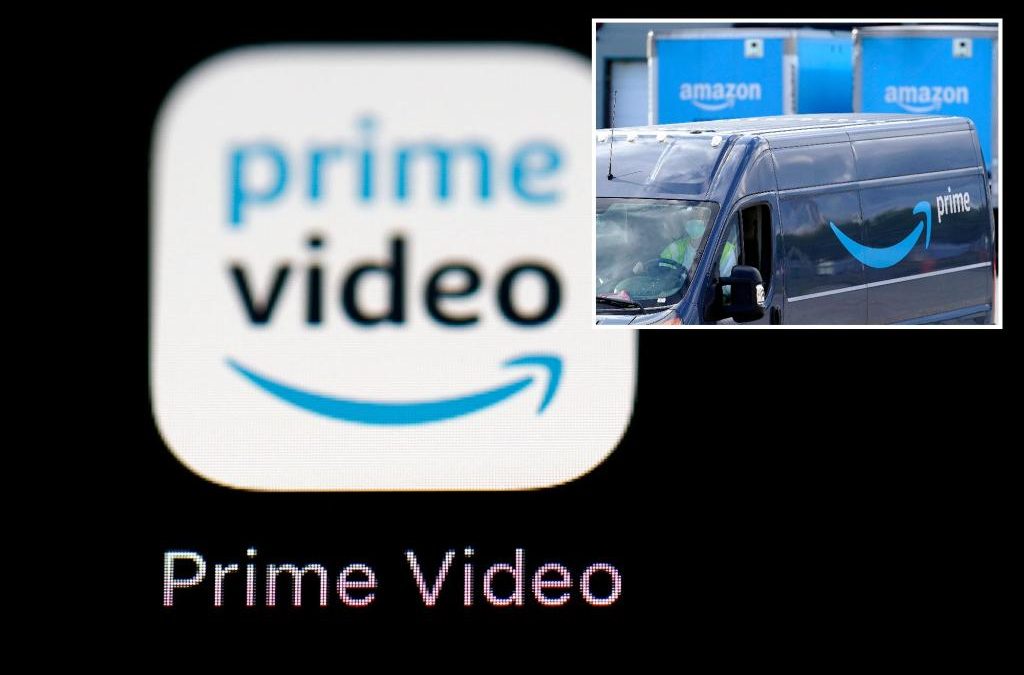Amazon said on Friday that it plans to start putting advertisements in the TV shows and movies on its Prime Video streaming platform as the Seattle-based e-tailing giant scrambles to shore up profits.
Prime Video subscribers in the US, UK, Germany and Canada can kiss their commercial-free programs goodbye in early 2024, Amazon shared in a press release.
Viewers in France, Italy, Spain, Mexico and Australia, meanwhile, won’t have ads infiltrating their moves and TV series until later in the year.
Amazon did not provide an exact date for when ads would hit its Prime Video programs — which includes over 26,000 movies and 2,700-plus shows — though it said it “aims to have meaningfully fewer ads than linear TV and other streaming TV providers.”
The company assured that the price of a Prime Video membership would not change from its current rate of $8.99 per month, or $14.99 per month when coupled with Amazon Prime. However, to enjoy ad-free streaming again, viewers will have to chalk up an additional $2.99 per month.
“We will email Prime members several weeks before ads are introduced into Prime Video with information on how to sign up for the ad-free option if they would like,” Amazon said in the press release.
Prime Video commercials comes at a time when Amazon has been employing cost-cutting efforts, including when it shed some 9,000 jobs earlier this year — just weeks after laying off around 18,000.
The mass layoff impacted 3% of the Seattle-based e-commerce giant’s 282,000-strong workforce.
However, recent reports have revealed that the workforce isn’t so strong anymore, with workers in Amazon’s once-storied hardware division suffering from low morale after staff cutbacks and a pipeline of devices in development that they fear are unlikely to prove hits.
The division, known internally as Lab126, was set up by Amazon founder Jeff Bezos as an engine for future projects, though staff shakeups and looming key executive departures — including leader Dave Limp, a 13-year veteran who has announced plans to step down later this year — doesn’t have remaining staffers feeling too innovative.
All the while, Amazon has also been leaving a trail of unopened “zombie stores” across the country.
Since 2020, Amazon has opened 44 Amazon Fresh locations and inked nearly three dozen leases that remain construction sites or are vacant — so-called “zombie” storefronts, five of which are located in New York.

Last year, the company also raised the price of its US Prime membership, from $119 to $139, while monthly memberships increased from $12.99 to $14.99, Amazon said in its fourth-quarter earnings release.
To further counter rising costs, Amazon raised fees for its Prime service in Europe by 43% per year shortly thereafter.
Representatives for Amazon declined to comment beyond the company’s press release.
Amazon and its Prime Video division aren’t alone in their financial struggles.
Streaming platform Roku slashed its workforce by about 10% earlier this month when it handed 360 people pink slips.
Roku said in a regulatory filing on Wednesday that it anticipates a restructuring charge of $45 million to $65 million related to the job cuts, which will mostly include severance and benefits costs, with the majority of the charge expected to occur in its fiscal third quarter.
After a streak of profitable quarters during the pandemic, the San Jose, Calif.-based company has put up a string of quarterly losses that began in 2022.

Disney also implemented a series of price hikes for its Disney+ streaming service in an effort to drive revenue.
The move has the entertainment behemoth anticipating its subscriber count to fall tens of millions short of Disney+’s 2024 target, anonymous sources told Bloomberg News.
Although Disney has never explicitly stated the expected shortfall, in February, returning CEO Bob Iger said the company would no longer provide subscriber forecasts, matching Netflix’s recent decision.
Sources said the subscriber miss is due to the fact that Disney+ — home of “The Mandalorian,” “Bluey” and “Ahsoka” — has been losing customers to price increases as well as falling demand in India after the company failed to win cricket streaming rights.
Source




